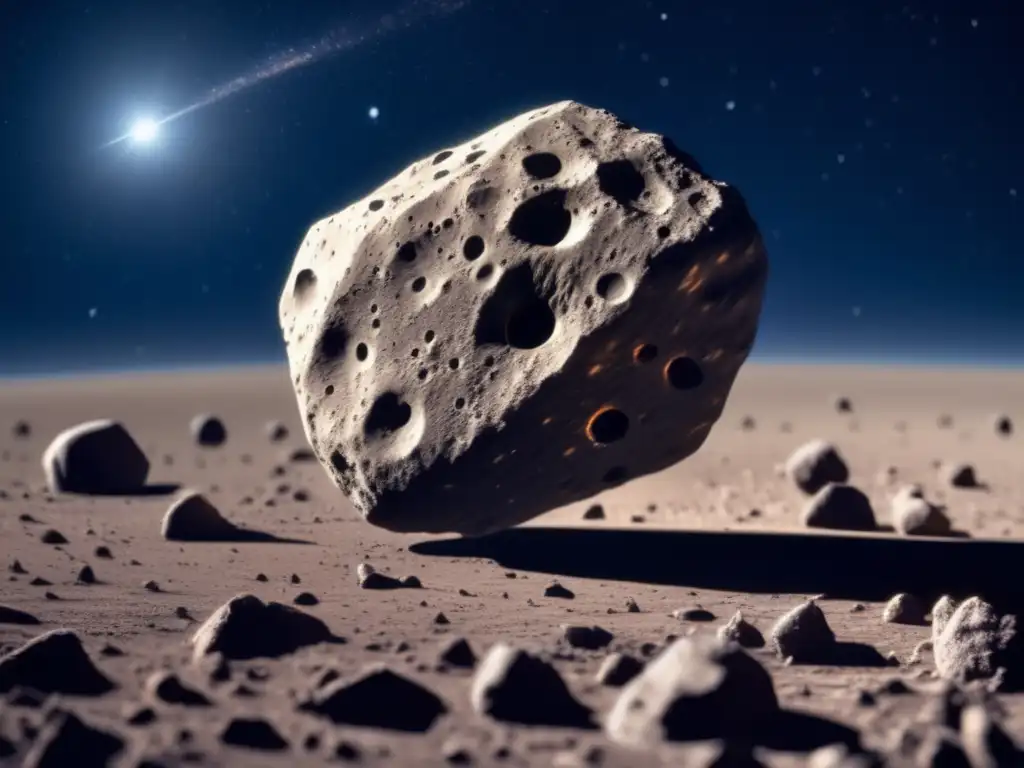Asteroids: Pioneers Of Life Across The Universe?

Introduction
Asteroids have long been studied by scientists for their potential to provide insights into the formation and evolution of our solar system. In recent times, they have also been studied for their potential to harbor extraterrestrial life or influence its formation and evolution. This article explores the theories and evidence surrounding the role of asteroids in the origin and spread of life across the universe.
Panspermia: The Theory of Biological Dissemination by Asteroids

The Origins of Panspermia
The concept of panspermia, which suggests that life on earth originated from extraterrestrial sources such as comets or asteroids, can be traced back to ancient Greece. Philosopher Anaxagoras was the first to suggest that life on Earth came from other worlds while scientist and theologian William Whewell introduced the term "panspermia" in 1859.
How Panspermia Works
The theory of panspermia proposes that life emerged on one planet, asteroid or comet and was transported via space debris to another celestial body where it could then propagate. The idea is that microbial life forms, or their precursors, could survive in the harsh environments of space and impact events could transport them from one celestial body to another.
Scientists believe that asteroids are particularly good candidates for the dissemination of microorganisms because they are composed of materials that could provide support for life, such as water, carbon, and amino acids. Furthermore, asteroids and comets can shield the microbes from cosmic radiation as they travel through space.
Evidence Supporting Panspermia
The discovery of microbial life forms on meteorites that originated on Mars provides compelling evidence that the theory of panspermia holds some truth. In 1996, scientists discovered small, odd-looking objects inside a meteorite that had impacted Antarctica, and shortly thereafter they were able to extract evidence of life from the objects. While these particular findings are still debated, they served as a catalyst for further research into the potential of asteroids to carry life.
Another interesting finding came from the study of the Tagish Lake meteorite that fell in Canada over 10 years ago. The rock contained microorganisms, or their precursors, which are capable of surviving extreme space conditions and harsh environments on other planets.
The Significance of Panspermia for the Search for Extraterrestrial Life
The theory of panspermia has significant implications for the search for extraterrestrial life. It means that life may exist in many parts of the universe, as long as there is a source of meteorites or comets that can transport them between celestial bodies. This could greatly expand the potential range of regions where life could exist beyond Earth, increasing the likelihood of finding it. Equally, the idea of panspermia raises the question of whether extraterrestrial life may have already been transported to Earth by a meteorite or comet, meaning that we may already be living in a biological universe.
The Potential of Asteroids to Host Extraterrestrial Life

Asteroids as Habitats for Extraterrestrial Life
Recent years have seen increasing interest in asteroids as potential habitats for extraterrestrial life. Research suggests that asteroids could provide the necessary conditions for life to thrive, including the presence of water and organic compounds.
The discovery of organic compounds such as amino acids on asteroids offers further support for the potential of asteroids to host extraterrestrial life. In 2010, for example, researchers discovered glycine in samples returned from the asteroid Itokawa by the Japanese Hayabusa mission. This was the first time that organic material had been identified on an extraterrestrial object.
The Role of Asteroids in Seeding Life on Other Planets
Asteroids could also play a role in seeding life on other planets by transporting the necessary materials. Research has shown that asteroids can transport water and organic compounds to other planets, providing essential ingredients for the formation of life.
There is also the potential for asteroids to transfer life between planets through impact events. If a celestial body is hit by an asteroid carrying microbial life or its precursors, those life forms could be transferred to another planet with similar conditions, potentially leading to the spread of life throughout the universe.
Frequently Asked Questions

-
What is panspermia?
Panspermia is the theory that life existed elsewhere in the universe prior to being transported to Earth via comets or asteroids.
-
What evidence supports the theory of panspermia?
The Tagish Lake meteorite contained microorganisms similar to those that can survive in extreme space conditions and on other planets.
-
Do asteroids contain organic compounds?
Yes, asteroids have been found to contain organic compounds such as amino acids that are essential building blocks for life.
-
How could asteroids play a role in seeding life on other planets?
Asteroids could transport water and organic compounds to other planets, providing essential ingredients for the formation of life. They could also spread life between planets through impact events.
-
Can extraterrestrial life already be present on Earth?
Yes, it is possible that life may have been transported to Earth by a meteorite or comet.
Conclusion
Asteroids are fascinating celestial objects that offer valuable insight into the formation and evolution of our solar system. In recent years, they have also gained increasing attention in terms of their potential to harbor extraterrestrial life or influence its formation and evolution. The theory of panspermia and the discovery of organic compounds on asteroids have raised the possibility that life exists beyond Earth and that asteroids could be key in its dissemination. By studying asteroids, we may gain insight into the origins and diversity of life across the universe.
At Asteroid Realm, we encourage our readers and viewers to join us in this exciting journey of discovery as we explore the vast possibilities of asteroids. Follow us on social media, subscribe to our newsletter and engage with us on our website to stay up-to-date on the latest developments in asteroid research and exploration.
Additional Resources

- NASA: Panspermia Theory of Astrophysics
- The Role of Asteroids in the Origin and Evolution of Life
- Organic Molecules Found on an Alien World
 The Seeds Of Life: Are Asteroids The Cosmic Gardeners?
The Seeds Of Life: Are Asteroids The Cosmic Gardeners? Can Asteroids Be The Cradle Of Alien Life?
Can Asteroids Be The Cradle Of Alien Life? Life Beyond Earth: Could Asteroids Be The Key?
Life Beyond Earth: Could Asteroids Be The Key?If you want to discover more articles similar to Asteroids: Pioneers Of Life Across The Universe?, you can visit the Asteroids and Extraterrestrial Life category.
Leave a Reply

Articulos relacionados: